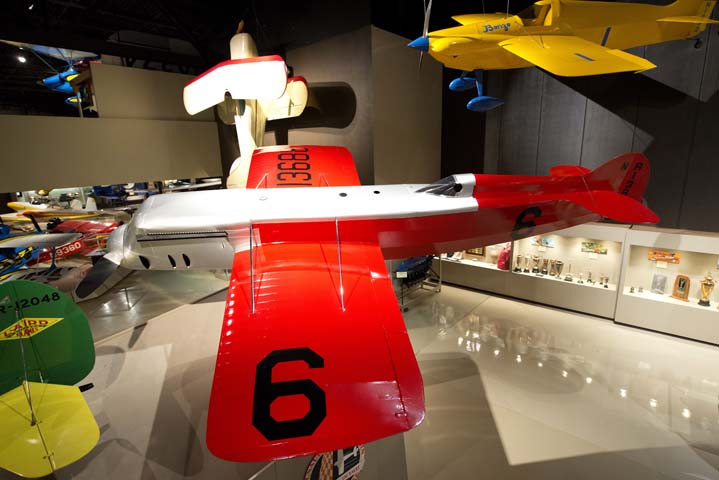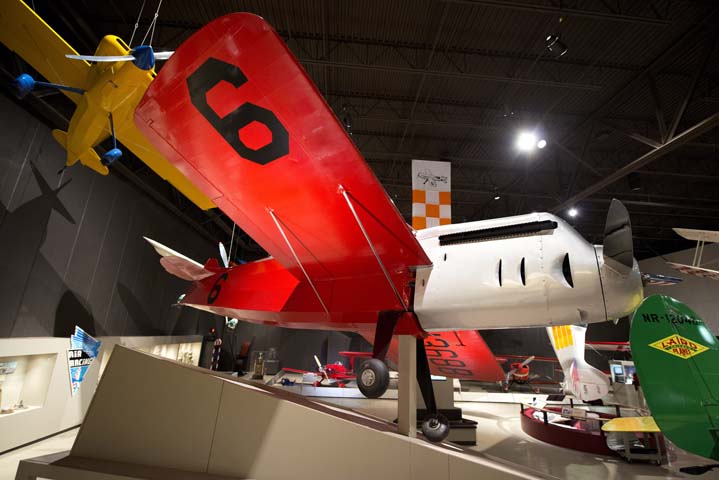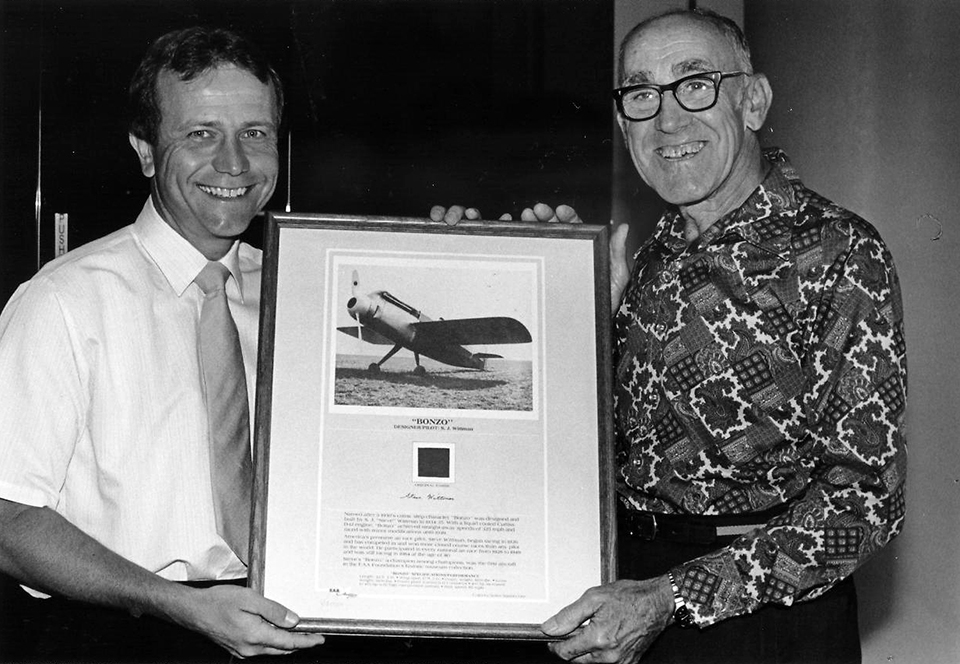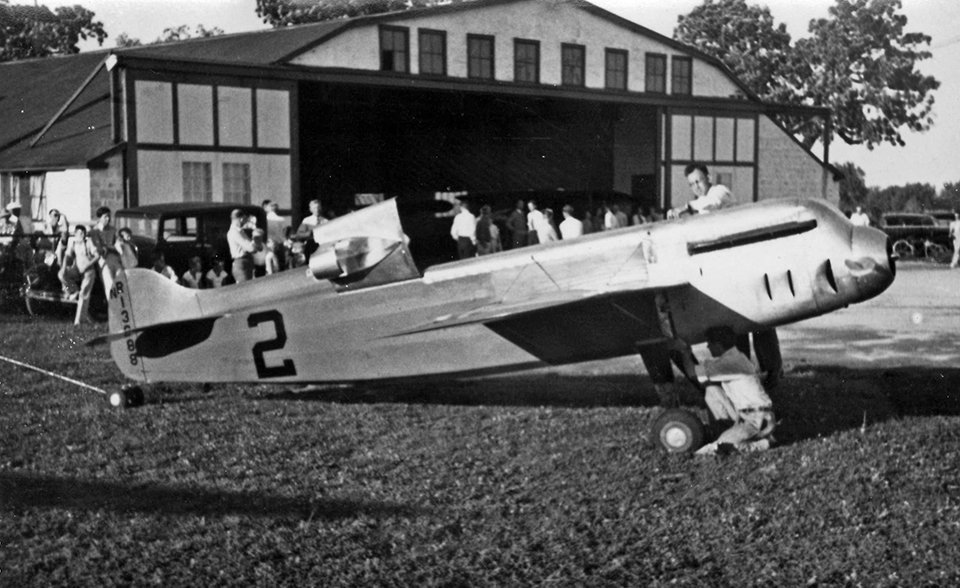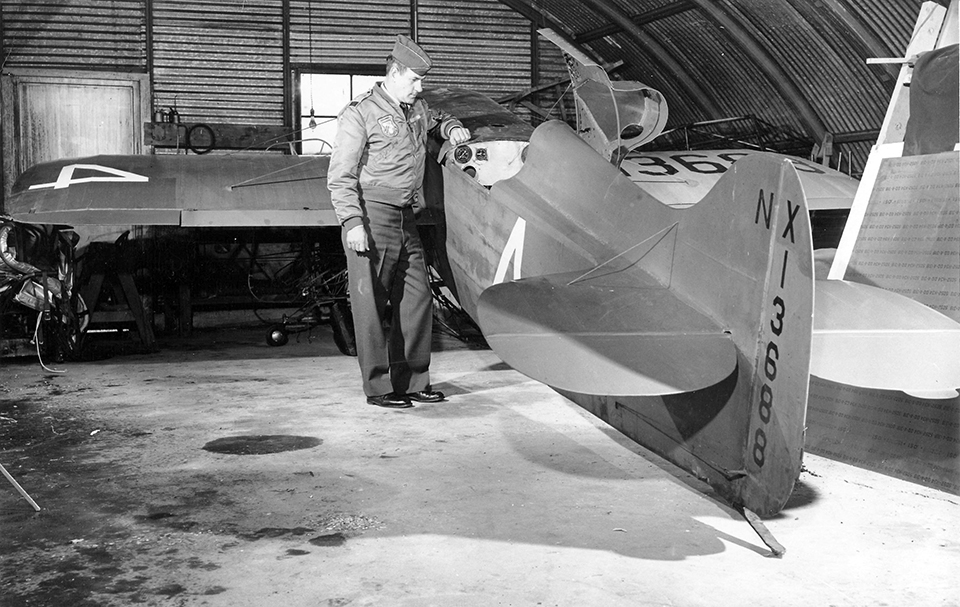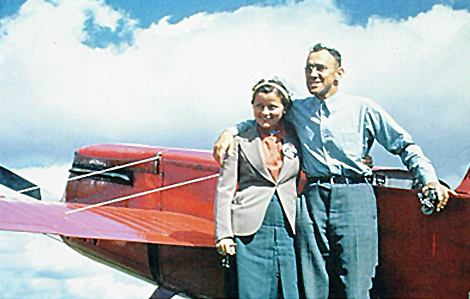1934 Wittman D-12 'Bonzo' - N13688 (N4486E)
Location: Air Racing & Aerobatics
Sylvester Wittman (1904-1995), known as “Witt” or “Steve” to his friends, was one of the most successful pylon (closed-course) air racers in history. Between 1926 and 1989, he competed in and won more air races than any other pilot. In addition to building some of the world’s most successful race airplanes, he designed and patented the spring landing gear later used in Cessna airplanes. He and Bill Brennand effectively invented Formula Vee (Volkswagen-powered) air racing. The airport at Oshkosh, Wisconsin, bears his name to this day.
Wittman learned to fly in 1924 in a surplus Standard J-1 biplane he bought with a friend. He entered his first air race two years later in Milwaukee, and he first competed in the National Air Races in Florida in 1928. In 1931, he moved to Oshkosh, Wisconsin, to operate the Oshkosh airport. There, he designed and built Chief Oshkosh, his first homebuilt racer. With engines ranging from 90 to 150 hp, Chief Oshkosh won many races between 1931 and 1937 and placed “in the money” in many others, often competing against much more powerful aircraft. In 1937, Wittman piloted the Chief to a world speed record for its class, clocking 238.22 mph.
In 1934, Wittman set his sights on the famed Thompson Trophy Race, a pylon race for aircraft of unlimited size and power. Without any formal training in aeronautics, Witt designed and built Bonzo, specifically for the Thompson Trophy Race. The design was dictated by the engine and Wittman’s choice of engine was dictated by his lack of funds. He chose an obsolete Curtiss D-12 engine, the same type as was used in Curtiss-Schneider Trophy Race winners in the mid-1920s. Wittman’s race plane designs emphasized light weight rather than sophisticated streamlining. Bonzo’s fuselage was no larger than it had to be to hold the big V-12 engine, giving it an odd, angular look that the race press called “a flying barn door.” The wings, built of wood, did not have the strong, heavy plywood skins typical of race planes of the day. Instead, Wittman spaced the wing ribs closer together as in normal wing construction. With a doped fabric skin, the extra ribs gave the wings the strength needed at race speeds.
In its first Thompson Trophy Race in 1935 Bonzo finished second behind Harold Neumann in Mr. Mulligan. Flying Bonzo cross-country to the 1936 National Air Races in Los Angeles, Wittman landed in Cheyenne, Wyoming, where an engine backfire set Bonzo ablaze. The fire was quickly put out but the airplane was damaged too much to compete that year. A year later, at the 1937 Thompson Trophy Race, Wittman flew a rebuilt Bonzo to the fastest qualifying time — more than 275 mph. He led the field for 18 of the race’s 20 laps, until a rough engine forced him to throttle back and finish in fifth place. In the 1938 National Air Races, Wittman and Bonzo placed third and in 1939, in the last Thompson race before World War II, they placed fifth. Throughout its racing career, Bonzo faced competitors with more horsepower and more financial backing, yet remained a serious and respected adversary among unlimited pylon racers. In its final configuration, Bonzo could achieve 325 mph — faster than the fastest U.S. military fighter planes of the day — on just 485 hp.
When unlimited air racing resumed after WWII, it was dominated by modified fighters — the days of the homebuilt racer were gone and Bonzo retired. Wittman continued racing and winning in a variety of airplanes until his retirement in 1989 at age 85.
Bonzo was donated by Steve Wittman and restored in 1982 for permanent display in the EAA Aviation Museum.
Length: 22 feet, 2 inches
Wingspan: 17 feet, 2 inches
Empty Weight: 1,650 pounds
Gross Weight: 2,470 pounds
Cruise Speed: 250 mph
Maximum Speed: 325 mph
Seats: 1
Powerplant: Curtiss D-12 Challenger
Horsepower: 485 hp
